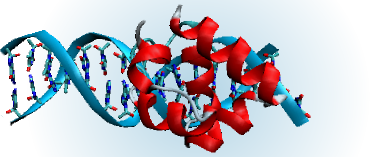Spektroskopická analýza karotenoidů v živých organismech
Autor: Bc. Anna RosenkrancováVedoucí práce: Doc. RNDr. Peter Mojzeš, CSc.
Konzultanti: Jana Pilátová
Typ: Magisterská
Anotace: Karotenoidy jsou jednou z nejčastěji se vyskytujících biomolekul v živých organismech od bakterií po savce. Mají rozličné funkce – od světlosběrných antén v chloroplastech rostlin a řas přes fotosenzorické pigmenty nezbytné pro naše vidění po antioxidanty. V závislosti na funkci je také jejich lokalizace v buňkách a subcelulárních kompartmentech odlišná. Karotenoidy mají extrémně silný signál Ramanova rozptylu i mimo oblast rezonančního zesílení díky velmi efektivními ramanovskému průřezu. Zároveň v literatuře panuje nesoulad ohledně dalších spektrálních vlastností přisuzovaných v biologických článcích fluorescenci, zatímco fyzikálně zaměřené články fluorescenci rezolutně vylučují s ohledem na zakázané energetické přechody nutné pro excitaci valenčních elektronů. Dále zatím není obecně rozšířené povědomí o původu „zelené autofluorescence“ u celé řady organismů včetně lidských buněčných linií a vzorků tkání, kde se dokonce využívá jako „proxy“ při stárnutí nebo progresi patologických nálezů. Naše dosavadní pozorování nasvědčuje tomu, že molekulární podstatou těchto dosud neinterpretovaných dat je právě přítomnost karotenoidů, jejichž spektrální vlastnosti se liší v závislosti na chemickém prostředí, zejména polaritě rozpouštědla, což bude předmětem zkoumání této práce. Práce bude mít za cíl systematicky revidovat spektrální chování karotenoidů jako čisté látky a také přímo in vivo a in situ v živých buňkách. Potřebný materiál a experimentální vybavení v podobě Ramanova mikroskopu, Ramanova spektroskopu, fluorimetru a FLIM mikroskopie jsou k dispozici. Diplomová práce bude součástí grantového projektu GAČR, ze kterého bude řešiteli diplomové práce poskytnuta finanční podpora. Výsledky práce budou prezentovány na konferencích a publikovány jako vědecký článek.

